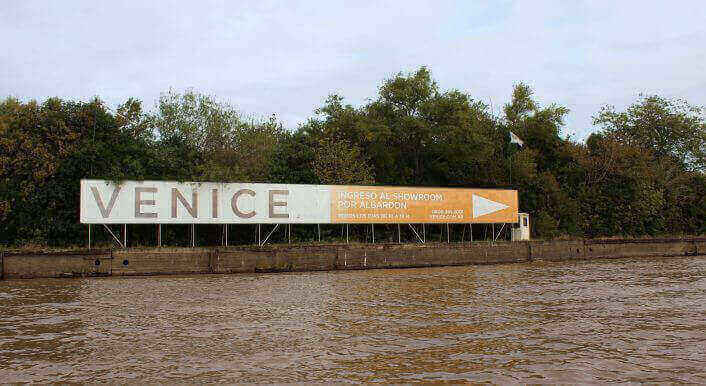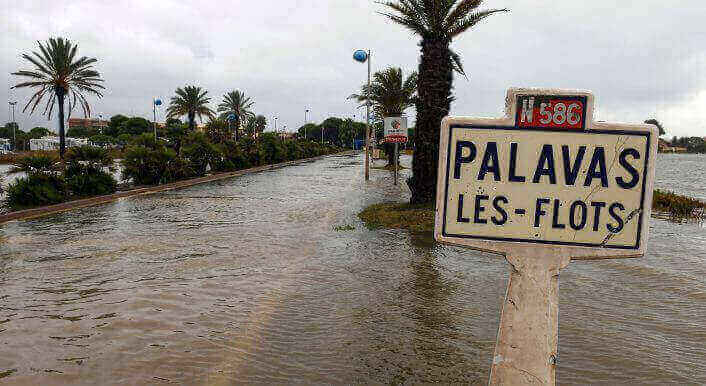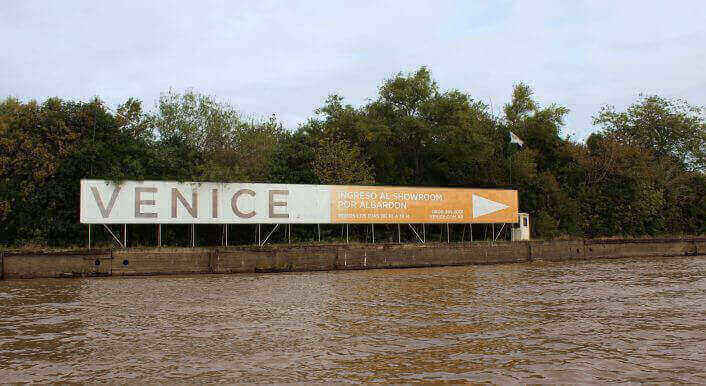More than 60 million Africans are affected by sea level rise
Every year the sea rises an average of two millimetres globally. Data from South Africa suggests the increase will be much bigger there. Millions of people will lose their homes. But so far only Cape Town has invested in precautionary measures.

Darryl Colenbrander spends his life with the sea. In his spare time he enjoys surfing, and during the week he tries to prepare Cape Town for rising sea levels. His official job is running the coastal protection program (Coastal Management Programme). On a map, he draws a line around the metropolis of four million people, which he calls his “setback line”. Beyond it, there is already the threat of flooding during storms. In the long run, this whole zone will be under water. At the moment no new construction work is allowed beyond this line, and in the medium term the people who live beyond it will be resettled.
This is a task that requires a lot of tact, says Colenbrander. He is a trained philosopher, not an engineer or scientist, and he tries to take into account the social aspects of his planning as well. “Each coast is a complex area,” he says, “he who wants to change it needs to respect the tradition and history of its inhabitants. When we say we want to protect you — then this means something different for every citizen.”
Colenbrander says the advice of the IPCC is important and right but needs to be specifically negotiated and implemented at each location. “In South Africa we have the legacy of apartheid. Some coastal strips were only accessible to whites, others reserved for blacks. We have to consider these past injustices for our protection plans.” To date, mainly the poor live near the sea,beyond the setback line. It would be a fatal signal to demolish their accommodation first, says Colenbrander, and: “There can be no solution for all.”
Scant data situation
Overall, the data situation for the African continent is not very good. Our visualization is based on only a few measuring points. Data is only available from ports which are important for world trade. There are six measuring points in South African ports, which indicate that the sea has risen by more than ten centimetres in the past 30 years. They include Port Elizabeth in Simons Bay, near Cape Town, a large industrial site where Victorian houses are a reminder of the British colonial period; Port Nolloth, a hub for shipping copper ores; and East London, where historically leather was traded and where today Daimler Benz AG builds cars and trucks.
Only in the Tanzanian port of Zanzibar have the levels dropped over a number of years, possibly influenced by numerous buildings in the vicinity of the measuring points. However,recently the sea here rose by about two centimetres.
No money for protective measures
“The lack of data from Africa hampers scientific predictions of climate change,” says Sally Brown, environmental and marine scientist in Southampton. Brown predicts tough times for the African population: “The sea will not rise as strongly as in South Asia. But the people in Africa are much less protected than in industrialized countries.” There are very few studies and even fewer planned construction projects with which the countries could contain the rising seas. Brown does understand: “If a state is primarily concerned with building hospitals and schools, then there is no time and no money to protect against potential climate-related damages.”
Sometimes travel entrepreneurs want to protect beaches with controversial construction projects. Some luxury resorts in Zanzibar have built protective walls in front of their sandy beaches which now direct the currents and waves to other coasts around the island. Fishermen and residents protested against these arbitrary actions that make the beaches beyond the tourist temples swell or wash away. According to Sally Brown about 1.6 million people in Tanzania will be affected by flooding in the coming decade.
Between 60 and 70 million Africans live in areas that are up to ten metres above sea level — and could soon be submerged into the salty water. In the average scenario predicted by climate scientists the Indian Ocean will rise 43 centimetres by 2100, displacing 16 million people from their homes. The worst affected areas will be Mozambique, Guinea, Nigeria, Guinea-Bissau and South Africa. But so far only Cape Town is developing a protection plan for its coasts.
In 2100, countries such as Algeria, Morocco, Cameroon, Tunisia and Libya will have to spend more than one billion euros a year repairing what the rising waters destroy on the coasts, according to calculations by Sally Brown and colleagues. (pdf) Not taking protective measures would cost even more — and the damage caused by the floods would have to be endured.
The good in the bad
In spite of all the horrific scenarios: In Cape Town, Darryl Colenbrander hopes that climate change will also lead people to set aside old divisions between black and white. “We now have the chance to right the wrongs of the past,” he says. Because all people now need to put distance between themselves and the coast. Poor and rich. About 75 per cent of high-risk areas are currently built up. With surf clubs and slums, bars and shacks. Before climate change, however, all are equal. And must give way.
Translation: Samy Feistenberger/Victoria Parsons



